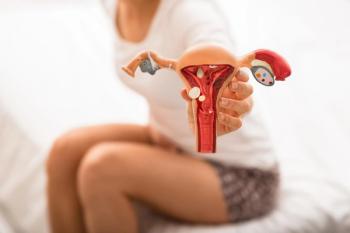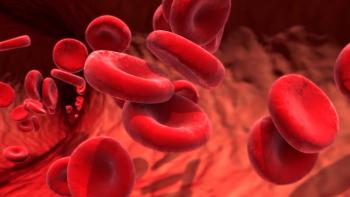
New guideline on menopause and perimenopause management released
The updated guideline offers evidence-based recommendations for diagnosing and managing menopause.
A Clinical Practice Guideline for Management and Evaluation of Menopause and the Perimenopause was published in the European Journal of Endocrinology in October 2025 by the European Society of Endocrinology (ESE).1
These guidelines have received endorsement from the Endocrine Society, European Menopause and Andropause Society, and British Menopause Society. Recommendations for assessing and treating patients with premature ovarian insufficiency (POI), early menopause, and menopause in middle age are included.1
“This is an important topic because 51% of the population is women, and by 2030, there will be 2 billion postmenopausal women. Quite a number of them will have difficulties that mean they don't function fully in their workplace or in their social lives, and all doctors should be able to help them,” said Mary Ann Lumsden, MD, a professor at the University of Glasgow in Scotland.1
Expert panel and guideline development
An expert panel of gynecologists and endocrinologists convened to develop the guidelines, which are designed for primary care physicians and specialists who manage more complex cases, to understand optimal management strategies. Diagnosis strategies were also discussed.2
The guideline was developed through systematic literature searches, taking into account the quality of evidence, desirable vs undesirable outcome balance, and individual preferences.2 Strong recommendations were categorized as “recommend,” and weak recommendations were categorized as “suggest.”
Recommendations were considered strong if all reasonably informed persons would agree with them. They were considered weak if most, but not all, would act in accordance with the guidelines. Quality of evidence was classified as low, moderate, or high.2
Questions addressed and defining menopause
Articles from the PubMed, MEDLINE, Embase, Web of Science, and Cochrane Library databases, including data about postmenopausal women without Turner syndrome or breast cancer, were eligible for assessment. The panel developed 3 questions from the data.2
The first question was about the efficacy of locally absorbed low-dose estrogen compared with systemically absorbed estrogen on sexual function. The second question focused on the impact of different estrogen doses on the risk of fractures. Finally, the third question discussed the effects of progestogen monotherapy on menopausal symptoms.2
Based on the data, investigators recommended that menopause be considered as a spectrum that includes both perimenopause and postmenopause. Although the average age of menopause among White women in Europe is 51 years, variations may occur based on ethnicity and country. Perimenopause should be considered even in women without typical symptoms.2
Diagnostic recommendations for different age groups
Even in younger patients, the guidelines define perimenopause as menstrual irregularity with a cycle length outside the range of 21 to 35 days. In women aged under 40 years with menstrual irregularity, subfertility, or vasomotor symptoms, the guidelines recommend diagnosing POI.2
Investigators noted that 1% to 3% of women experience POI, which has been linked to a family history of early menopause. Patients with POI may undergo additional investigations, such as karyotyping and further genetic testing. Prior to initiating hormone replacement therapy, fracture and cardiovascular disease risk assessments should be performed.2
In perimenopausal women aged over 45 years, the guidelines stated biochemical testing is not needed for diagnosis or management. These women may already present with increased follicle-stimulating hormone (FSH) levels during the late reproductive phase. However, normal FSH levels in fertile women should not rule out perimenopause.2
Clinical implications and future direction
Biochemical testing for POI is recommended in women aged under 40 years with relevant symptoms. Delayed diagnosis may lead to increased osteoporosis, depression, cognitive decline, cardiovascular disease, and sexual dysfunction risks. Similar risks have been reported in women with early menopause.2
Overall, the guidelines can help clinicians diagnose and treat menopause-related symptoms in their patients.1 Investigators also discussed the impact of menopausal hormone therapy on preventing chronic disease.
“The ESE Guideline…has been developed because it is important that all health care professionals have a fundamental knowledge of [how to treat] women presenting with symptoms related to the menopause,” said Frederic Castinetti, PhD, chair of the ESE Clinical Committee.1
References
- ESE announces new Clinical Practice Guideline for Management and Evaluation of Menopause and the Perimenopause. News release. European Society of Endocrinology. October 18, 2025. Accessed October 28, 2025. https://www.eurekalert.org/news-releases/1102857
- Lumsden MA, Dekkers OM, Faubion SS, et al. European Society of Endocrinology clinical practice guideline for evaluation and management of menopause and the perimenopause. Eur J Endocrinol. 2025;193(4):G49–G81. doi:10.1093/ejendo/lvaf206
Newsletter
Get the latest clinical updates, case studies, and expert commentary in obstetric and gynecologic care. Sign up now to stay informed.










